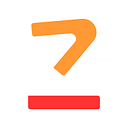R3 Files Distributed Ledger Patent for Corda, Unique Privacy Component of Blockchain Financial Services.
A patent was filed by R3 CEV, one of the leading software companies facilitating top-notch R3 Corda development services related to finance. The brand is currently investigating DLT for Corda. R3 CEV has developed Corda that offers a shared type of ledger.
Project Concord was announced by the company. Corda will be the key element for the project, and the fully operated platform represents the vision for financial services’ future. Crucial information was provided by R3 on Corda through a non-technical and introductory overview.
Filing:
The filing of a patent was confirmed by a spokesman of R3. It was announced on 24th August through an article that was published in “Wall Street Journal.” It was the outcome of the company’s briefing.
In a different blog post inside the website, it was noted by WSJ that R3 had driven the filing of the patent. R3 realized that the unique features of Corda make it an ideal choice for utilizing it in the space of financial services, and also, the features facilitated the protection of intellectual property.
Design:
R3, in its blog, posted that the CTO of the company, Richard Brown, mentioned the design of Corda. He said that the analysis’ outcome they have performed on the process to attain the maximum benefits of the Corda blockchain technology and distributed ledger is all about the method that addresses the requirement of the financially regulated institutions, and which is sympathetic as well.
Features:
Among all the features, the chief feature of the patent is the approach of Corda blockchain development to share vital data like transactions related to finance on the ledger. This makes it reachable to only those participants who hold the right to do so.
As per the blog post of WSJ, the executives of R3 have contrasted the approach to full data transparency on platforms such as Ethereum and Bitcoin. This architecture makes sure that it is perfect for the banks because of their regulatory and business-driven requirement for privacy.
The needs were undoubtedly able to emphasize R3 with a 60 member consortium of circa. It includes commercial banks, investment, institutional investors, commercial banks, insurance agencies, and an exchange that trades commodities, futures, and securities. The unit of financial service of Toyota is also a participant, and the same is the vendor of financial and information technology, Thomson Reuters. Some of the other significant features that Corda offers according to the outlines of the R3-Corda Development white paper are as follows:
- Corda supports the supervisory and regulatory observer nodes’ inclusion.
- It validates transactions only between parties.
- Corda supports various mechanisms of consensus.
- It records all the explicit links present between the code of smart contract and legal human-language documents (prose).
- Corda choreographs workflow between the firms without any controller at the center.
With smart contracts’ regard, Corda uses the potentials discussed in the white paper named “Smart Contract Templates: foundations, design landscape and research directions.” It was authored by Christopher Clack of University College London, Lee Braine, and Vikram Bakshi.
A significant element of the smart contract of Corda is that this is like an agreement, and its execution is computer code automated operating with human control and input. The obligations and rights are enforceable legally, as being told in the legal prose.
At a higher technical level, the smart contracts of Corda regulated token are executed through code that functions on a JVM. The design was chosen because of its broad acceptance in the space of services of finance, its richness, and its extensibility. But the implementation of JVM by Corda has included performance and security features if compared to the standard offerings. Well, by standardizing the virtual machine, the programmers are not limited to coding in only Java, but also, they can pick from the increasing languages that they can compile for producing it.
Concord Vault is a notable aspect of the entire platform. It holds the data associated with transactions that are only shareable between the rightful parties. Services like business monitoring, technical alerting, and regulatory reporting are all the essential operability needed for the full production usage of the applications related to finance.
There is a need for adopters to create an interface with the financial networks that already exist, like CLS and DTCC, and also for gateways for accessing the systems internally. The integration will serve as a business opportunity because of the deployment of distributed ledgers alongside and within the legacy architecture.
Conclusion:
Thus, R3 plays a vital role in the Hyperledger Project. It is an initiative led by Linux Foundation for making a distributed ledger that is open source. After Corda consulting, R3’s spokesperson claims it to be an active controller and says that it will persist in exploring different ways for utilizing the code developed by the community in the products of the real world.
